-
Infection Market, BY Diagnosis Method (USD Billion) \n\t
-
\n\t\n\t\t\n\n\t\tPhysical
-
Examination \n\t\t
-
\n\t\t\n\n\n\t\tImaging Tests \n\t\t
-
\n\t\t\n\n\n\t\tBlood
-
Tests \n\t\t
-
\n\t\t\n\n\n\t\tSalivary Gland Biopsy \n\t\t\n\t\t
-
\n\t\n\n\t\n\n\n\tSalivary\n\tGland
-
Infection Market, BY Treatment Type (USD Billion) \n\t
-
\n\t\n\t\t\n\n\t\tAntibiotics
-
\ \n\t\t
-
\n\t\t\n\n\n\t\tSurgery \n\t\t
-
\n\t\t\n\n\n\t\tAntiviral
-
Medications \n\t\t
-
\n\t\t\n\n\n\t\tHydration Therapy \n\t\t
-
\n\t\n\n\t\n\n\n\tSalivary\n\tGland
-
Infection Market, BY Patient Age Group (USD Billion) \n\t
-
\n\t\n\t\t\n\n\t\tPediatric
-
\ \n\t\t
-
\n\t\t\n\n\n\t\tAdult \n\t\t
-
\n\t\t\n\n\n\t\tGeriatric
-
\ \n\t\t
-
\n\t\n\n\t\n\n\n\tSalivary\n\tGland Infection
-
Market, BY Regional (USD Billion) \n\t
-
\n\t\n\t\t\n\n\t\tNorth
-
America \n\t\t
-
\n\t\t\n\t\t\t\n\n\t\t\tUS \n\t\t\t
-
\n\t\t\t\n\n\n\t\t\tCanada
-
\ \n\t\t\t
-
\n\t\t\n\n\t\t\n\n\n\t\tEurope \n\t\t
-
\n\t\t\n\t\t\t\n\n\t\t\tGermany
-
\ \n\t\t\t
-
\n\t\t\t\n\n\n\t\t\tUK \n\t\t\t
-
\n\t\t\t\n\n\n\t\t\tFrance
-
\ \n\t\t\t
-
\n\t\t\t\n\n\n\t\t\tRussia \n\t\t\t
-
\n\t\t\t\n\n\n\t\t\tItaly
-
\ \n\t\t\t
-
\n\t\t\t\n\n\n\t\t\tSpain \n\t\t\t
-
\n\t\t\t\n\n\n\t\t\tRest
-
of Europe \n\t\t\t
-
\n\t\t\n\n\t\t\n\n\n\t\tAPAC
-
\ \n\t\t
-
\n\t\t\n\t\t\t\n\n\t\t\tChina \n\t\t\t
-
\n\t\t\t\n\n\n\t\t\tIndia
-
\ \n\t\t\t
-
\n\t\t\t\n\n\n\t\t\tJapan \n\t\t\t
-
\n\t\t\t\n\n\n\t\t\tSouth
-
Korea \n\t\t\t
-
\n\t\t\t\n\n\n\t\t\tMalaysia \n\t\t\t
-
\n\t\t\t\n\n\n\t\t\tThailand
-
\ \n\t\t\t
-
\n\t\t\t\n\n\n\t\t\tIndonesia \n\t\t\t
-
\n\t\t\t\n\n\n\t\t\tRest
-
of APAC \n\t\t\t
-
\n\t\t\n\n\t\t\n\n\n\t\tSouth
-
America \n\t\t
-
\n\t\t\n\t\t\t\n\n\t\t\tBrazil \n\t\t\t
-
\n\t\t\t\n\n\n\t\t\tMexico
-
\ \n\t\t\t
-
\n\t\t\t\n\n\n\t\t\tArgentina \n\t\t\t
-
\n\t\t\t\n\n\n\t\t\tRest
-
of South America \n\t\t\t \n\t\t\t
-
\n\t\t\n\n\t\t\n\n\n\t\tMEA
-
\ \n\t\t
-
\n\t\t\n\t\t\t\n\n\t\t\tGCC Countries \n\t\t\t
-
\n\t\t\t\n\n\n\t\t\tSouth
-
Africa \n\t\t\t
-
\n\t\t\t\n\n\n\t\t\tRest of MEA \n\t\t\t
-
\n\t\t\n\n\t\n\n\n\n\n\n
-
\n
-
\n\n \n
-
\n\n\t\n\n\tCompetitive\n\tLandscape \n\t
-
\n\t\n\t\t\n\n\t\tOverview
-
\ \n\t\t
-
\n\t\t\n\n\n\t\tCompetitive Analysis \n\t\t
-
\n\t\t\n\n\n\t\tMarket
-
share Analysis \n\t\t
-
\n\t\t\n\n\n\t\tMajor Growth Strategy in
-
the\n\t\tSalivary Gland Infection Market \n\t\t
-
\n\t\t\n\n\n\t\tCompetitive
-
Benchmarking \n\t\t\n\t\t
-
\n\t\t\n\n\n\t\tLeading Players in Terms
-
of\n\t\tNumber of Developments in the Salivary Gland Infection Market \n\t\t
-
\n\t\t\n\n\n\t\tKey
-
developments and growth\n\t\tstrategies \n\t\t
-
\n\t\t\n\t\t\t\n\n\t\t\tNew
-
Product Launch/Service\n\t\t\tDeployment \n\t\t\t
-
\n\t\t\t\n\n\n\t\t\tMerger
-
& Acquisitions \n\t\t\t \n\t\t\t
-
\n\t\t\t\n\n\n\t\t\tJoint
-
Ventures \n\t\t\t
-
\n\t\t\n\n\t\t\n\n\n\t\tMajor
-
Players Financial\n\t\tMatrix \n\t\t
-
\n\t\t\n\t\t\t\n\n\t\t\tSales
-
and Operating Income \n\t\t\t \n\t\t\t
-
\n\t\t\t\n\n\n\t\t\tMajor
-
Players R&D\n\t\t\tExpenditure. 2023 \n\t\t\t
-
\n\t\t\n\n\t\n\n\t\n\n\n\tCompany\n\tProfiles
-
\ \n\t
-
\n\t\n\t\t\n\n\t\tPfizer \n\t\t
-
\n\t\t\n\t\t\t\n\n\t\t\tFinancial
-
Overview \n\t\t\t
-
\n\t\t\t\n\n\n\t\t\tProducts Offered \n\t\t\t
-
\n\t\t\t\n\n\n\t\t\tKey
-
Developments \n\t\t\t
-
\n\t\t\t\n\n\n\t\t\tSWOT Analysis \n\t\t\t
-
\n\t\t\t\n\n\n\t\t\tKey
-
Strategies \n\t\t\t
-
\n\t\t\n\n\t\t\n\n\n\t\tMerck
-
\ and Co \n\t\t
-
\n\t\t\n\t\t\t\n\n\t\t\tFinancial Overview \n\t\t\t
-
\n\t\t\t\n\n\n\t\t\tProducts
-
Offered \n\t\t\t
-
\n\t\t\t\n\n\n\t\t\tKey Developments \n\t\t\t
-
\n\t\t\t\n\n\n\t\t\tSWOT
-
Analysis \n\t\t\t
-
\n\t\t\t\n\n\n\t\t\tKey Strategies \n\t\t\t
-
\n\t\t\n\n\t\t\n\n\n\t\tTakeda
-
Pharmaceutical \n\t\t
-
\n\t\t\n\t\t\t\n\n\t\t\tFinancial Overview
-
\ \n\t\t\t
-
\n\t\t\t\n\n\n\t\t\tProducts Offered \n\t\t\t
-
\n\t\t\t\n\n\n\t\t\tKey
-
Developments \n\t\t\t
-
\n\t\t\t\n\n\n\t\t\tSWOT Analysis \n\t\t\t
-
\n\t\t\t\n\n\n\t\t\tKey
-
Strategies \n\t\t\t
-
\n\t\t\n\n\t\t\n\n\n\t\tAbbVie
-
\ \n\t\t
-
\n\t\t\n\t\t\t\n\n\t\t\tFinancial Overview \n\t\t\t
-
\n\t\t\t\n\n\n\t\t\tProducts
-
Offered \n\t\t\t
-
\n\t\t\t\n\n\n\t\t\tKey Developments \n\t\t\t
-
\n\t\t\t\n\n\n\t\t\tSWOT
-
Analysis \n\t\t\t
-
\n\t\t\t\n\n\n\t\t\tKey Strategies \n\t\t\t
-
\n\t\t\n\n\t\t\n\n\n\t\tGilead
-
Sciences \n\t\t
-
\n\t\t\n\t\t\t\n\n\t\t\tFinancial Overview \n\t\t\t
-
\n\t\t\t\n\n\n\t\t\tProducts
-
Offered \n\t\t\t
-
\n\t\t\t\n\n\n\t\t\tKey Developments \n\t\t\t
-
\n\t\t\t\n\n\n\t\t\tSWOT
-
Analysis \n\t\t\t
-
\n\t\t\t\n\n\n\t\t\tKey Strategies \n\t\t\t
-
\n\t\t\n\n\t\t\n\n\n\t\tEli
-
Lilly \n\t\t
-
\n\t\t\n\t\t\t\n\n\t\t\tFinancial Overview \n\t\t\t
-
\n\t\t\t\n\n\n\t\t\tProducts
-
Offered \n\t\t\t
-
\n\t\t\t\n\n\n\t\t\tKey Developments \n\t\t\t
-
\n\t\t\t\n\n\n\t\t\tSWOT
-
Analysis \n\t\t\t
-
\n\t\t\t\n\n\n\t\t\tKey Strategies \n\t\t\t
-
\n\t\t\n\n\t\t\n\n\n\t\tJohnson
-
\ and Johnson \n\t\t
-
\n\t\t\n\t\t\t\n\n\t\t\tFinancial Overview
-
\ \n\t\t\t
-
\n\t\t\t\n\n\n\t\t\tProducts Offered \n\t\t\t
-
\n\t\t\t\n\n\n\t\t\tKey
-
Developments \n\t\t\t
-
\n\t\t\t\n\n\n\t\t\tSWOT Analysis \n\t\t\t
-
\n\t\t\t\n\n\n\t\t\tKey
-
Strategies \n\t\t\t
-
\n\t\t\n\n\t\t\n\n\n\t\tBristol
-
Myers Squibb \n\t\t
-
\n\t\t\n\t\t\t\n\n\t\t\tFinancial Overview \n\t\t\t
-
\n\t\t\t\n\n\n\t\t\tProducts
-
Offered \n\t\t\t
-
\n\t\t\t\n\n\n\t\t\tKey Developments \n\t\t\t
-
\n\t\t\t\n\n\n\t\t\tSWOT
-
Analysis \n\t\t\t
-
\n\t\t\t\n\n\n\t\t\tKey Strategies \n\t\t\t
-
\n\t\t\n\n\t\t\n\n\n\t\tRoche
-
\ \n\t\t
-
\n\t\t\n\t\t\t\n\n\t\t\tFinancial Overview \n\t\t\t
-
\n\t\t\t\n\n\n\t\t\tProducts
-
Offered \n\t\t\t
-
\n\t\t\t\n\n\n\t\t\tKey Developments \n\t\t\t
-
\n\t\t\t\n\n\n\t\t\tSWOT
-
Analysis \n\t\t\t
-
\n\t\t\t\n\n\n\t\t\tKey Strategies \n\t\t\t
-
\n\t\t\n\n\t\t\n\n\n\t\tTeva
-
Pharmaceutical\n\t\tIndustries \n\t\t
-
\n\t\t\n\t\t\t\n\n\t\t\tFinancial
-
Overview \n\t\t\t
-
\n\t\t\t\n\n\n\t\t\tProducts Offered \n\t\t\t
-
\n\t\t\t\n\n\n\t\t\tKey
-
Developments \n\t\t\t
-
\n\t\t\t\n\n\n\t\t\tSWOT Analysis \n\t\t\t
-
\n\t\t\t\n\n\n\t\t\tKey
-
Strategies \n\t\t\t
-
\n\t\t\n\n\t\t\n\n\n\t\tNovartis
-
\ \n\t\t
-
\n\t\t\n\t\t\t\n\n\t\t\tFinancial Overview \n\t\t\t
-
\n\t\t\t\n\n\n\t\t\tProducts
-
Offered \n\t\t\t
-
\n\t\t\t\n\n\n\t\t\tKey Developments \n\t\t\t
-
\n\t\t\t\n\n\n\t\t\tSWOT
-
Analysis \n\t\t\t
-
\n\t\t\t\n\n\n\t\t\tKey Strategies \n\t\t\t
-
\n\t\t\n\n\t\t\n\n\n\t\tAstraZeneca
-
\ \n\t\t
-
\n\t\t\n\t\t\t\n\n\t\t\tFinancial Overview \n\t\t\t
-
\n\t\t\t\n\n\n\t\t\tProducts
-
Offered \n\t\t\t
-
\n\t\t\t\n\n\n\t\t\tKey Developments \n\t\t\t
-
\n\t\t\t\n\n\n\t\t\tSWOT
-
Analysis \n\t\t\t
-
\n\t\t\t\n\n\n\t\t\tKey Strategies \n\t\t\t
-
\n\t\t\n\n\t\t\n\n\n\t\tGlaxoSmithKline
-
\ \n\t\t
-
\n\t\t\n\t\t\t\n\n\t\t\tFinancial Overview \n\t\t\t
-
\n\t\t\t\n\n\n\t\t\tProducts
-
Offered \n\t\t\t
-
\n\t\t\t\n\n\n\t\t\tKey Developments \n\t\t\t
-
\n\t\t\t\n\n\n\t\t\tSWOT
-
Analysis \n\t\t\t
-
\n\t\t\t\n\n\n\t\t\tKey Strategies \n\t\t\t
-
\n\t\t\n\n\t\t\n\n\n\t\tAmgen
-
\ \n\t\t
-
\n\t\t\n\t\t\t\n\n\t\t\tFinancial Overview \n\t\t\t
-
\n\t\t\t\n\n\n\t\t\tProducts
-
Offered \n\t\t\t
-
\n\t\t\t\n\n\n\t\t\tKey Developments \n\t\t\t
-
\n\t\t\t\n\n\n\t\t\tSWOT
-
Analysis \n\t\t\t
-
\n\t\t\t\n\n\n\t\t\tKey Strategies \n\t\t\t
-
\n\t\t\n\n\t\t\n\n\n\t\tSanofi
-
\ \n\t\t
-
\n\t\t\n\t\t\t\n\n\t\t\tFinancial Overview \n\t\t\t
-
\n\t\t\t\n\n\n\t\t\tProducts
-
Offered \n\t\t\t
-
\n\t\t\t\n\n\n\t\t\tKey Developments \n\t\t\t
-
\n\t\t\t\n\n\n\t\t\tSWOT
-
Analysis \n\t\t\t
-
\n\t\t\t\n\n\n\t\t\tKey Strategies \n\t\t\t\n\t\t\t
-
\n\t\t\n\n\t\n\n\t\n\n\n\tAppendix\n\t
-
\ \n\t
-
\n\t\n\t\t\n\n\t\tReferences \n\t\t
-
\n\t\t\n\n\n\t\tRelated
-
Reports \n\t\t
-
\n\t\n\n\n\n\nLIST\nOf tables
-
\n\n\n\n
-
\n\n\t\n\n\tLIST\n\tOF
-
ASSUMPTIONS\n\t \n\t
-
\n\t\n\n\n\tNorth\n\tAmerica Salivary Gland
-
Infection Market SIZE ESTIMATES &\n\tFORECAST, BY TYPE OF INFECTION, 2019-2035
-
(USD Billions)\n\t \n\t
-
\n\t\n\n\n\tNorth\n\tAmerica Salivary Gland
-
Infection Market SIZE ESTIMATES &\n\tFORECAST, BY DIAGNOSIS METHOD, 2019-2035
-
(USD Billions)\n\t \n\t
-
\n\t\n\n\n\tNorth\n\tAmerica Salivary Gland
-
Infection Market SIZE ESTIMATES &\n\tFORECAST, BY TREATMENT TYPE, 2019-2035
-
(USD Billions)\n\t \n\t
-
\n\t\n\n\n\tNorth\n\tAmerica Salivary Gland
-
Infection Market SIZE ESTIMATES &\n\tFORECAST, BY PATIENT AGE GROUP, 2019-2035
-
(USD Billions)\n\t \n\t
-
\n\t\n\n\n\tNorth\n\tAmerica Salivary Gland
-
Infection Market SIZE ESTIMATES &\n\tFORECAST, BY REGIONAL, 2019-2035 (USD Billions)\n\t
-
\ \n\t
-
\n\t\n\n\n\tUS\n\tSalivary Gland Infection Market SIZE ESTIMATES
-
& FORECAST, BY\n\tTYPE OF INFECTION, 2019-2035 (USD Billions)\n\t \n\t
-
\n\t\n\n\n\tUS\n\tSalivary
-
Gland Infection Market SIZE ESTIMATES & FORECAST, BY\n\tDIAGNOSIS METHOD, 2019-2035
-
(USD Billions)\n\t \n\t
-
\n\t\n\n\n\tUS\n\tSalivary Gland Infection
-
Market SIZE ESTIMATES & FORECAST, BY\n\tTREATMENT TYPE, 2019-2035 (USD Billions)\n\t
-
\ \n\t
-
\n\t\n\n\n\tUS\n\tSalivary Gland Infection Market SIZE ESTIMATES
-
& FORECAST, BY\n\tPATIENT AGE GROUP, 2019-2035 (USD Billions)\n\t \n\t
-
\n\t\n\n\n\tUS\n\tSalivary
-
Gland Infection Market SIZE ESTIMATES & FORECAST, BY\n\tREGIONAL, 2019-2035
-
(USD Billions)\n\t \n\t
-
\n\t\n\n\n\tCanada\n\tSalivary Gland Infection
-
Market SIZE ESTIMATES & FORECAST, BY\n\tTYPE OF INFECTION, 2019-2035 (USD Billions)\n\t
-
\ \n\t
-
\n\t\n\n\n\tCanada\n\tSalivary Gland Infection Market SIZE
-
ESTIMATES & FORECAST, BY\n\tDIAGNOSIS METHOD, 2019-2035 (USD Billions)\n\t \n\t
-
\n\t\n\n\n\tCanada\n\tSalivary
-
Gland Infection Market SIZE ESTIMATES & FORECAST, BY\n\tTREATMENT TYPE, 2019-2035
-
(USD Billions)\n\t \n\t
-
\n\t\n\n\n\tCanada\n\tSalivary Gland Infection
-
Market SIZE ESTIMATES & FORECAST, BY\n\tPATIENT AGE GROUP, 2019-2035 (USD Billions)\n\t
-
\ \n\t
-
\n\t\n\n\n\tCanada\n\tSalivary Gland Infection Market SIZE
-
ESTIMATES & FORECAST, BY\n\tREGIONAL, 2019-2035 (USD Billions)\n\t \n\t
-
\n\t\n\n\n\tEurope\n\tSalivary
-
Gland Infection Market SIZE ESTIMATES & FORECAST, BY\n\tTYPE OF INFECTION, 2019-2035
-
(USD Billions)\n\t \n\t
-
\n\t\n\n\n\tEurope\n\tSalivary Gland Infection
-
Market SIZE ESTIMATES & FORECAST, BY\n\tDIAGNOSIS METHOD, 2019-2035 (USD Billions)\n\t
-
\ \n\t
-
\n\t\n\n\n\tEurope\n\tSalivary Gland Infection Market SIZE
-
ESTIMATES & FORECAST, BY\n\tTREATMENT TYPE, 2019-2035 (USD Billions)\n\t \n\t
-
\n\t\n\n\n\tEurope\n\tSalivary
-
Gland Infection Market SIZE ESTIMATES & FORECAST, BY\n\tPATIENT AGE GROUP, 2019-2035
-
(USD Billions)\n\t \n\t
-
\n\t\n\n\n\tEurope\n\tSalivary Gland Infection
-
Market SIZE ESTIMATES & FORECAST, BY\n\tREGIONAL, 2019-2035 (USD Billions)\n\t
-
\ \n\t
-
\n\t\n\n\n\tGermany\n\tSalivary Gland Infection Market SIZE
-
ESTIMATES & FORECAST, BY\n\tTYPE OF INFECTION, 2019-2035 (USD Billions)\n\t
-
\ \n\t
-
\n\t\n\n\n\tGermany\n\tSalivary Gland Infection Market SIZE
-
ESTIMATES & FORECAST, BY\n\tDIAGNOSIS METHOD, 2019-2035 (USD Billions)\n\t \n\t
-
\n\t\n\n\n\tGermany\n\tSalivary
-
Gland Infection Market SIZE ESTIMATES & FORECAST, BY\n\tTREATMENT TYPE, 2019-2035
-
(USD Billions)\n\t \n\t
-
\n\t\n\n\n\tGermany\n\tSalivary Gland Infection
-
Market SIZE ESTIMATES & FORECAST, BY\n\tPATIENT AGE GROUP, 2019-2035 (USD Billions)\n\t
-
\ \n\t
-
\n\t\n\n\n\tGermany\n\tSalivary Gland Infection Market SIZE
-
ESTIMATES & FORECAST, BY\n\tREGIONAL, 2019-2035 (USD Billions)\n\t \n\t
-
\n\t\n\n\n\tUK\n\tSalivary
-
Gland Infection Market SIZE ESTIMATES & FORECAST, BY\n\tTYPE OF INFECTION, 2019-2035
-
(USD Billions)\n\t \n\t
-
\n\t\n\n\n\tUK\n\tSalivary Gland Infection
-
Market SIZE ESTIMATES & FORECAST, BY\n\tDIAGNOSIS METHOD, 2019-2035 (USD Billions)\n\t
-
\ \n\t
-
\n\t\n\n\n\tUK\n\tSalivary Gland Infection Market SIZE ESTIMATES
-
& FORECAST, BY\n\tTREATMENT TYPE, 2019-2035 (USD Billions)\n\t \n\t
-
\n\t\n\n\n\tUK\n\tSalivary
-
Gland Infection Market SIZE ESTIMATES & FORECAST, BY\n\tPATIENT AGE GROUP, 2019-2035
-
(USD Billions)\n\t \n\t
-
\n\t\n\n\n\tUK\n\tSalivary Gland Infection
-
Market SIZE ESTIMATES & FORECAST, BY\n\tREGIONAL, 2019-2035 (USD Billions)\n\t
-
\ \n\t
-
\n\t\n\n\n\tFrance\n\tSalivary Gland Infection Market SIZE
-
ESTIMATES & FORECAST, BY\n\tTYPE OF INFECTION, 2019-2035 (USD Billions)\n\t
-
\ \n\t
-
\n\t\n\n\n\tFrance\n\tSalivary Gland Infection Market SIZE
-
ESTIMATES & FORECAST, BY\n\tDIAGNOSIS METHOD, 2019-2035 (USD Billions)\n\t \n\t
-
\n\t\n\n\n\tFrance\n\tSalivary
-
Gland Infection Market SIZE ESTIMATES & FORECAST, BY\n\tTREATMENT TYPE, 2019-2035
-
(USD Billions)\n\t \n\t
-
\n\t\n\n\n\tFrance\n\tSalivary Gland Infection
-
Market SIZE ESTIMATES & FORECAST, BY\n\tPATIENT AGE GROUP, 2019-2035 (USD Billions)\n\t
-
\ \n\t
-
\n\t\n\n\n\tFrance\n\tSalivary Gland Infection Market SIZE
-
ESTIMATES & FORECAST, BY\n\tREGIONAL, 2019-2035 (USD Billions)\n\t \n\t
-
\n\t\n\n\n\tRussia\n\tSalivary
-
Gland Infection Market SIZE ESTIMATES & FORECAST, BY\n\tTYPE OF INFECTION, 2019-2035
-
(USD Billions)\n\t \n\t
-
\n\t\n\n\n\tRussia\n\tSalivary Gland Infection
-
Market SIZE ESTIMATES & FORECAST, BY\n\tDIAGNOSIS METHOD, 2019-2035 (USD Billions)\n\t
-
\ \n\t
-
\n\t\n\n\n\tRussia\n\tSalivary Gland Infection Market SIZE
-
ESTIMATES & FORECAST, BY\n\tTREATMENT TYPE, 2019-2035 (USD Billions)\n\t \n\t
-
\n\t\n\n\n\tRussia\n\tSalivary
-
Gland Infection Market SIZE ESTIMATES & FORECAST, BY\n\tPATIENT AGE GROUP, 2019-2035
-
(USD Billions)\n\t \n\t
-
\n\t\n\n\n\tRussia\n\tSalivary Gland Infection
-
Market SIZE ESTIMATES & FORECAST, BY\n\tREGIONAL, 2019-2035 (USD Billions)\n\t
-
\ \n\t
-
\n\t\n\n\n\tItaly\n\tSalivary Gland Infection Market SIZE
-
ESTIMATES & FORECAST, BY\n\tTYPE OF INFECTION, 2019-2035 (USD Billions)\n\t
-
\ \n\t
-
\n\t\n\n\n\tItaly\n\tSalivary Gland Infection Market SIZE
-
ESTIMATES & FORECAST, BY\n\tDIAGNOSIS METHOD, 2019-2035 (USD Billions)\n\t \n\t
-
\n\t\n\n\n\tItaly\n\tSalivary
-
Gland Infection Market SIZE ESTIMATES & FORECAST, BY\n\tTREATMENT TYPE, 2019-2035
-
(USD Billions)\n\t \n\t
-
\n\t\n\n\n\tItaly\n\tSalivary Gland Infection
-
Market SIZE ESTIMATES & FORECAST, BY\n\tPATIENT AGE GROUP, 2019-2035 (USD Billions)\n\t
-
\ \n\t
-
\n\t\n\n\n\tItaly\n\tSalivary Gland Infection Market SIZE
-
ESTIMATES & FORECAST, BY\n\tREGIONAL, 2019-2035 (USD Billions)\n\t \n\t
-
\n\t\n\n\n\tSpain\n\tSalivary
-
Gland Infection Market SIZE ESTIMATES & FORECAST, BY\n\tTYPE OF INFECTION, 2019-2035
-
(USD Billions)\n\t \n\t
-
\n\t\n\n\n\tSpain\n\tSalivary Gland Infection
-
Market SIZE ESTIMATES & FORECAST, BY\n\tDIAGNOSIS METHOD, 2019-2035 (USD Billions)\n\t
-
\ \n\t
-
\n\t\n\n\n\tSpain\n\tSalivary Gland Infection Market SIZE
-
ESTIMATES & FORECAST, BY\n\tTREATMENT TYPE, 2019-2035 (USD Billions)\n\t \n\t
-
\n\t\n\n\n\tSpain\n\tSalivary
-
Gland Infection Market SIZE ESTIMATES & FORECAST, BY\n\tPATIENT AGE GROUP, 2019-2035
-
(USD Billions)\n\t \n\t
-
\n\t\n\n\n\tSpain\n\tSalivary Gland Infection
-
Market SIZE ESTIMATES & FORECAST, BY\n\tREGIONAL, 2019-2035 (USD Billions)\n\t
-
\ \n\t
-
\n\t\n\n\n\tRest\n\tof Europe Salivary Gland Infection Market
-
SIZE ESTIMATES &\n\tFORECAST, BY TYPE OF INFECTION, 2019-2035 (USD Billions)\n\t
-
\ \n\t
-
\n\t\n\n\n\tRest\n\tof Europe Salivary Gland Infection Market
-
SIZE ESTIMATES &\n\tFORECAST, BY DIAGNOSIS METHOD, 2019-2035 (USD Billions)\n\t
-
\ \n\t
-
\n\t\n\n\n\tRest\n\tof Europe Salivary Gland Infection Market
-
SIZE ESTIMATES &\n\tFORECAST, BY TREATMENT TYPE, 2019-2035 (USD Billions)\n\t
-
\ \n\t
-
\n\t\n\n\n\tRest\n\tof Europe Salivary Gland Infection Market
-
SIZE ESTIMATES &\n\tFORECAST, BY PATIENT AGE GROUP, 2019-2035 (USD Billions)\n\t
-
\ \n\t
-
\n\t\n\n\n\tRest\n\tof Europe Salivary Gland Infection Market
-
SIZE ESTIMATES &\n\tFORECAST, BY REGIONAL, 2019-2035 (USD Billions)\n\t \n\t
-
\n\t\n\n\n\tAPAC\n\tSalivary
-
Gland Infection Market SIZE ESTIMATES & FORECAST, BY\n\tTYPE OF INFECTION, 2019-2035
-
(USD Billions)\n\t \n\t
-
\n\t\n\n\n\tAPAC\n\tSalivary Gland Infection
-
Market SIZE ESTIMATES & FORECAST, BY\n\tDIAGNOSIS METHOD, 2019-2035 (USD Billions)\n\t
-
\ \n\t
-
\n\t\n\n\n\tAPAC\n\tSalivary Gland Infection Market SIZE ESTIMATES
-
& FORECAST, BY\n\tTREATMENT TYPE, 2019-2035 (USD Billions)\n\t \n\t
-
\n\t\n\n\n\tAPAC\n\tSalivary
-
Gland Infection Market SIZE ESTIMATES & FORECAST, BY\n\tPATIENT AGE GROUP, 2019-2035
-
(USD Billions)\n\t \n\t
-
\n\t\n\n\n\tAPAC\n\tSalivary Gland Infection
-
Market SIZE ESTIMATES & FORECAST, BY\n\tREGIONAL, 2019-2035 (USD Billions)\n\t
-
\ \n\t
-
\n\t\n\n\n\tChina\n\tSalivary Gland Infection Market SIZE
-
ESTIMATES & FORECAST, BY\n\tTYPE OF INFECTION, 2019-2035 (USD Billions)\n\t
-
\ \n\t
-
\n\t\n\n\n\tChina\n\tSalivary Gland Infection Market SIZE
-
ESTIMATES & FORECAST, BY\n\tDIAGNOSIS METHOD, 2019-2035 (USD Billions)\n\t \n\t
-
\n\t\n\n\n\tChina\n\tSalivary
-
Gland Infection Market SIZE ESTIMATES & FORECAST, BY\n\tTREATMENT TYPE, 2019-2035
-
(USD Billions)\n\t \n\t
-
\n\t\n\n\n\tChina\n\tSalivary Gland Infection
-
Market SIZE ESTIMATES & FORECAST, BY\n\tPATIENT AGE GROUP, 2019-2035 (USD Billions)\n\t
-
\ \n\t
-
\n\t\n\n\n\tChina\n\tSalivary Gland Infection Market SIZE
-
ESTIMATES & FORECAST, BY\n\tREGIONAL, 2019-2035 (USD Billions)\n\t \n\t
-
\n\t\n\n\n\tIndia\n\tSalivary
-
Gland Infection Market SIZE ESTIMATES & FORECAST, BY\n\tTYPE OF INFECTION, 2019-2035
-
(USD Billions)\n\t \n\t
-
\n\t\n\n\n\tIndia\n\tSalivary Gland Infection
-
Market SIZE ESTIMATES & FORECAST, BY\n\tDIAGNOSIS METHOD, 2019-2035 (USD Billions)\n\t
-
\ \n\t
-
\n\t\n\n\n\tIndia\n\tSalivary Gland Infection Market SIZE
-
ESTIMATES & FORECAST, BY\n\tTREATMENT TYPE, 2019-2035 (USD Billions)\n\t \n\t
-
\n\t\n\n\n\tIndia\n\tSalivary
-
Gland Infection Market SIZE ESTIMATES & FORECAST, BY\n\tPATIENT AGE GROUP, 2019-2035
-
(USD Billions)\n\t \n\t
-
\n\t\n\n\n\tIndia\n\tSalivary Gland Infection
-
Market SIZE ESTIMATES & FORECAST, BY\n\tREGIONAL, 2019-2035 (USD Billions)\n\t
-
\ \n\t
-
\n\t\n\n\n\tJapan\n\tSalivary Gland Infection Market SIZE
-
ESTIMATES & FORECAST, BY\n\tTYPE OF INFECTION, 2019-2035 (USD Billions)\n\t
-
\ \n\t
-
\n\t\n\n\n\tJapan\n\tSalivary Gland Infection Market SIZE
-
ESTIMATES & FORECAST, BY\n\tDIAGNOSIS METHOD, 2019-2035 (USD Billions)\n\t \n\t
-
\n\t\n\n\n\tJapan\n\tSalivary
-
Gland Infection Market SIZE ESTIMATES & FORECAST, BY\n\tTREATMENT TYPE, 2019-2035
-
(USD Billions)\n\t \n\t
-
\n\t\n\n\n\tJapan\n\tSalivary Gland Infection
-
Market SIZE ESTIMATES & FORECAST, BY\n\tPATIENT AGE GROUP, 2019-2035 (USD Billions)\n\t
-
\ \n\t
-
\n\t\n\n\n\tJapan\n\tSalivary Gland Infection Market SIZE
-
ESTIMATES & FORECAST, BY\n\tREGIONAL, 2019-2035 (USD Billions)\n\t \n\t
-
\n\t\n\n\n\tSouth\n\tKorea
-
Salivary Gland Infection Market SIZE ESTIMATES & FORECAST,\n\tBY TYPE OF INFECTION,
-
\n\t\n\n\n\tSouth\n\tKorea Salivary
-
Gland Infection Market SIZE ESTIMATES & FORECAST,\n\tBY DIAGNOSIS METHOD, 2019-2035
-
(USD Billions)\n\t \n\t
-
\n\t\n\n\n\tSouth\n\tKorea Salivary Gland
-
Infection Market SIZE ESTIMATES & FORECAST,\n\tBY TREATMENT TYPE, 2019-2035
-
(USD Billions)\n\t \n\t
-
\n\t\n\n\n\tSouth\n\tKorea Salivary Gland
-
Infection Market SIZE ESTIMATES & FORECAST,\n\tBY PATIENT AGE GROUP, 2019-2035
-
(USD Billions)\n\t \n\t
-
\n\t\n\n\n\tSouth\n\tKorea Salivary Gland
-
Infection Market SIZE ESTIMATES & FORECAST,\n\tBY REGIONAL, 2019-2035 (USD Billions)\n\t
-
\ \n\t
-
\n\t\n\n\n\tMalaysia\n\tSalivary Gland Infection Market SIZE
-
ESTIMATES & FORECAST, BY\n\tTYPE OF INFECTION, 2019-2035 (USD Billions)\n\t
-
\ \n\t
-
\n\t\n\n\n\tMalaysia\n\tSalivary Gland Infection Market SIZE
-
ESTIMATES & FORECAST, BY\n\tDIAGNOSIS METHOD, 2019-2035 (USD Billions)\n\t \n\t
-
\n\t\n\n\n\tMalaysia\n\tSalivary
-
Gland Infection Market SIZE ESTIMATES & FORECAST, BY\n\tTREATMENT TYPE, 2019-2035
-
(USD Billions)\n\t \n\t
-
\n\t\n\n\n\tMalaysia\n\tSalivary Gland Infection
-
Market SIZE ESTIMATES & FORECAST, BY\n\tPATIENT AGE GROUP, 2019-2035 (USD Billions)\n\t
-
\ \n\t
-
\n\t\n\n\n\tMalaysia\n\tSalivary Gland Infection Market SIZE
-
ESTIMATES & FORECAST, BY\n\tREGIONAL, 2019-2035 (USD Billions)\n\t \n\t
-
\n\t\n\n\n\tThailand\n\tSalivary
-
Gland Infection Market SIZE ESTIMATES & FORECAST, BY\n\tTYPE OF INFECTION, 2019-2035
-
(USD Billions)\n\t \n\t
-
\n\t\n\n\n\tThailand\n\tSalivary Gland Infection
-
Market SIZE ESTIMATES & FORECAST, BY\n\tDIAGNOSIS METHOD, 2019-2035 (USD Billions)\n\t
-
\ \n\t
-
\n\t\n\n\n\tThailand\n\tSalivary Gland Infection Market SIZE
-
ESTIMATES & FORECAST, BY\n\tTREATMENT TYPE, 2019-2035 (USD Billions)\n\t \n\t
-
\n\t\n\n\n\tThailand\n\tSalivary
-
Gland Infection Market SIZE ESTIMATES & FORECAST, BY\n\tPATIENT AGE GROUP, 2019-2035
-
(USD Billions)\n\t \n\t
-
\n\t\n\n\n\tThailand\n\tSalivary Gland Infection
-
Market SIZE ESTIMATES & FORECAST, BY\n\tREGIONAL, 2019-2035 (USD Billions)\n\t
-
\ \n\t
-
\n\t\n\n\n\tIndonesia\n\tSalivary Gland Infection Market SIZE
-
ESTIMATES & FORECAST, BY\n\tTYPE OF INFECTION, 2019-2035 (USD Billions)\n\t
-
\ \n\t
-
\n\t\n\n\n\tIndonesia\n\tSalivary Gland Infection Market SIZE
-
ESTIMATES & FORECAST, BY\n\tDIAGNOSIS METHOD, 2019-2035 (USD Billions)\n\t \n\t
-
\n\t\n\n\n\tIndonesia\n\tSalivary
-
Gland Infection Market SIZE ESTIMATES & FORECAST, BY\n\tTREATMENT TYPE, 2019-2035
-
(USD Billions)\n\t \n\t
-
\n\t\n\n\n\tIndonesia\n\tSalivary Gland
-
Infection Market SIZE ESTIMATES & FORECAST, BY\n\tPATIENT AGE GROUP, 2019-2035
-
(USD Billions)\n\t \n\t
-
\n\t\n\n\n\tIndonesia\n\tSalivary Gland
-
Infection Market SIZE ESTIMATES & FORECAST, BY\n\tREGIONAL, 2019-2035 (USD Billions)\n\t
-
\ \n\t
-
\n\t\n\n\n\tRest\n\tof APAC Salivary Gland Infection Market
-
SIZE ESTIMATES &\n\tFORECAST, BY TYPE OF INFECTION, 2019-2035 (USD Billions)\n\t
-
\ \n\t
-
\n\t\n\n\n\tRest\n\tof APAC Salivary Gland Infection Market
-
SIZE ESTIMATES &\n\tFORECAST, BY DIAGNOSIS METHOD, 2019-2035 (USD Billions)\n\t
-
\ \n\t
-
\n\t\n\n\n\tRest\n\tof APAC Salivary Gland Infection Market
-
SIZE ESTIMATES &\n\tFORECAST, BY TREATMENT TYPE, 2019-2035 (USD Billions)\n\t
-
\ \n\t
-
\n\t\n\n\n\tRest\n\tof APAC Salivary Gland Infection Market
-
SIZE ESTIMATES &\n\tFORECAST, BY PATIENT AGE GROUP, 2019-2035 (USD Billions)\n\t
-
\ \n\t
-
\n\t\n\n\n\tRest\n\tof APAC Salivary Gland Infection Market
-
SIZE ESTIMATES &\n\tFORECAST, BY REGIONAL, 2019-2035 (USD Billions)\n\t \n\t
-
\n\t\n\n\n\tSouth\n\tAmerica
-
Salivary Gland Infection Market SIZE ESTIMATES &\n\tFORECAST, BY TYPE OF INFECTION,
-
\n\t\n\n\n\tSouth\n\tAmerica Salivary
-
Gland Infection Market SIZE ESTIMATES &\n\tFORECAST, BY DIAGNOSIS METHOD, 2019-2035
-
(USD Billions)\n\t \n\t
-
\n\t\n\n\n\tSouth\n\tAmerica Salivary Gland
-
Infection Market SIZE ESTIMATES &\n\tFORECAST, BY TREATMENT TYPE, 2019-2035
-
(USD Billions)\n\t \n\t
-
\n\t\n\n\n\tSouth\n\tAmerica Salivary Gland
-
Infection Market SIZE ESTIMATES &\n\tFORECAST, BY PATIENT AGE GROUP, 2019-2035
-
(USD Billions)\n\t \n\t
-
\n\t\n\n\n\tSouth\n\tAmerica Salivary Gland
-
Infection Market SIZE ESTIMATES &\n\tFORECAST, BY REGIONAL, 2019-2035 (USD Billions)\n\t
-
\ \n\t
-
\n\t\n\n\n\tBrazil\n\tSalivary Gland Infection Market SIZE
-
ESTIMATES & FORECAST, BY\n\tTYPE OF INFECTION, 2019-2035 (USD Billions)\n\t
-
\ \n\t
-
\n\t\n\n\n\tBrazil\n\tSalivary Gland Infection Market SIZE
-
ESTIMATES & FORECAST, BY\n\tDIAGNOSIS METHOD, 2019-2035 (USD Billions)\n\t \n\t
-
\n\t\n\n\n\tBrazil\n\tSalivary
-
Gland Infection Market SIZE ESTIMATES & FORECAST, BY\n\tTREATMENT TYPE, 2019-2035
-
(USD Billions)\n\t \n\t
-
\n\t\n\n\n\tBrazil\n\tSalivary Gland Infection
-
Market SIZE ESTIMATES & FORECAST, BY\n\tPATIENT AGE GROUP, 2019-2035 (USD Billions)\n\t
-
\ \n\t
-
\n\t\n\n\n\tBrazil\n\tSalivary Gland Infection Market SIZE
-
ESTIMATES & FORECAST, BY\n\tREGIONAL, 2019-2035 (USD Billions)\n\t \n\t
-
\n\t\n\n\n\tMexico\n\tSalivary
-
Gland Infection Market SIZE ESTIMATES & FORECAST, BY\n\tTYPE OF INFECTION, 2019-2035
-
(USD Billions)\n\t \n\t
-
\n\t\n\n\n\tMexico\n\tSalivary Gland Infection
-
Market SIZE ESTIMATES & FORECAST, BY\n\tDIAGNOSIS METHOD, 2019-2035 (USD Billions)\n\t
-
\ \n\t
-
\n\t\n\n\n\tMexico\n\tSalivary Gland Infection Market SIZE
-
ESTIMATES & FORECAST, BY\n\tTREATMENT TYPE, 2019-2035 (USD Billions)\n\t \n\t
-
\n\t\n\n\n\tMexico\n\tSalivary
-
Gland Infection Market SIZE ESTIMATES & FORECAST, BY\n\tPATIENT AGE GROUP, 2019-2035
-
(USD Billions)\n\t \n\t
-
\n\t\n\n\n\tMexico\n\tSalivary Gland Infection
-
Market SIZE ESTIMATES & FORECAST, BY\n\tREGIONAL, 2019-2035 (USD Billions)\n\t
-
\ \n\t
-
\n\t\n\n\n\tArgentina\n\tSalivary Gland Infection Market SIZE
-
ESTIMATES & FORECAST, BY\n\tTYPE OF INFECTION, 2019-2035 (USD Billions)\n\t
-
\ \n\t
-
\n\t\n\n\n\tArgentina\n\tSalivary Gland Infection Market SIZE
-
ESTIMATES & FORECAST, BY\n\tDIAGNOSIS METHOD, 2019-2035 (USD Billions)\n\t \n\t
-
\n\t\n\n\n\tArgentina\n\tSalivary
-
Gland Infection Market SIZE ESTIMATES & FORECAST, BY\n\tTREATMENT TYPE, 2019-2035
-
(USD Billions)\n\t \n\t
-
\n\t\n\n\n\tArgentina\n\tSalivary Gland
-
Infection Market SIZE ESTIMATES & FORECAST, BY\n\tPATIENT AGE GROUP, 2019-2035
-
(USD Billions)\n\t \n\t
-
\n\t\n\n\n\tArgentina\n\tSalivary Gland
-
Infection Market SIZE ESTIMATES & FORECAST, BY\n\tREGIONAL, 2019-2035 (USD Billions)\n\t
-
\ \n\t
-
\n\t\n\n\n\tRest\n\tof South America Salivary Gland Infection
-
Market SIZE ESTIMATES &\n\tFORECAST, BY TYPE OF INFECTION, 2019-2035 (USD Billions)\n\t
-
\ \n\t
-
\n\t\n\n\n\tRest\n\tof South America Salivary Gland Infection
-
Market SIZE ESTIMATES &\n\tFORECAST, BY DIAGNOSIS METHOD, 2019-2035 (USD Billions)\n\t
-
\ \n\t
-
\n\t\n\n\n\tRest\n\tof South America Salivary Gland Infection
-
Market SIZE ESTIMATES &\n\tFORECAST, BY TREATMENT TYPE, 2019-2035 (USD Billions)\n\t
-
\ \n\t
-
\n\t\n\n\n\tRest\n\tof South America Salivary Gland Infection
-
Market SIZE ESTIMATES &\n\tFORECAST, BY PATIENT AGE GROUP, 2019-2035 (USD Billions)\n\t
-
\ \n\t
-
\n\t\n\n\n\tRest\n\tof South America Salivary Gland Infection
-
Market SIZE ESTIMATES &\n\tFORECAST, BY REGIONAL, 2019-2035 (USD Billions)\n\t
-
\ \n\t
-
\n\t\n\n\n\tMEA\n\tSalivary Gland Infection Market SIZE ESTIMATES
-
& FORECAST, BY\n\tTYPE OF INFECTION, 2019-2035 (USD Billions)\n\t \n\t
-
\n\t\n\n\n\tMEA\n\tSalivary
-
Gland Infection Market SIZE ESTIMATES & FORECAST, BY\n\tDIAGNOSIS METHOD, 2019-2035
-
(USD Billions)\n\t \n\t
-
\n\t\n\n\n\tMEA\n\tSalivary Gland Infection
-
Market SIZE ESTIMATES & FORECAST, BY\n\tTREATMENT TYPE, 2019-2035 (USD Billions)\n\t
-
\ \n\t
-
\n\t\n\n\n\tMEA\n\tSalivary Gland Infection Market SIZE ESTIMATES
-
& FORECAST, BY\n\tPATIENT AGE GROUP, 2019-2035 (USD Billions)\n\t \n\t
-
\n\t\n\n\n\tMEA\n\tSalivary
-
Gland Infection Market SIZE ESTIMATES & FORECAST, BY\n\tREGIONAL, 2019-2035
-
(USD Billions)\n\t \n\t
-
\n\t\n\n\n\tGCC\n\tCountries Salivary Gland
-
Infection Market SIZE ESTIMATES &\n\tFORECAST, BY TYPE OF INFECTION, 2019-2035
-
(USD Billions)\n\t \n\t
-
\n\t\n\n\n\tGCC\n\tCountries Salivary Gland
-
Infection Market SIZE ESTIMATES &\n\tFORECAST, BY DIAGNOSIS METHOD, 2019-2035
-
(USD Billions)\n\t \n\t
-
\n\t\n\n\n\tGCC\n\tCountries Salivary Gland
-
Infection Market SIZE ESTIMATES &\n\tFORECAST, BY TREATMENT TYPE, 2019-2035
-
(USD Billions)\n\t \n\t
-
\n\t\n\n\n\tGCC\n\tCountries Salivary Gland
-
Infection Market SIZE ESTIMATES &\n\tFORECAST, BY PATIENT AGE GROUP, 2019-2035
-
(USD Billions)\n\t \n\t
-
\n\t\n\n\n\tGCC\n\tCountries Salivary Gland
-
Infection Market SIZE ESTIMATES &\n\tFORECAST, BY REGIONAL, 2019-2035 (USD Billions)\n\t
-
\ \n\t
-
\n\t\n\n\n\tSouth\n\tAfrica Salivary Gland Infection Market
-
SIZE ESTIMATES &\n\tFORECAST, BY TYPE OF INFECTION, 2019-2035 (USD Billions)\n\t
-
\ \n\t
-
\n\t\n\n\n\tSouth\n\tAfrica Salivary Gland Infection Market
-
SIZE ESTIMATES &\n\tFORECAST, BY DIAGNOSIS METHOD, 2019-2035 (USD Billions)\n\t
-
\ \n\t
-
\n\t\n\n\n\tSouth\n\tAfrica Salivary Gland Infection Market
-
SIZE ESTIMATES &\n\tFORECAST, BY TREATMENT TYPE, 2019-2035 (USD Billions)\n\t
-
\ \n\t
-
\n\t\n\n\n\tSouth\n\tAfrica Salivary Gland Infection Market
-
SIZE ESTIMATES &\n\tFORECAST, BY PATIENT AGE GROUP, 2019-2035 (USD Billions)\n\t
-
\ \n\t
-
\n\t\n\n\n\tSouth\n\tAfrica Salivary Gland Infection Market
-
SIZE ESTIMATES &\n\tFORECAST, BY REGIONAL, 2019-2035 (USD Billions)\n\t \n\t
-
\n\t\n\n\n\tRest\n\tof
-
MEA Salivary Gland Infection Market SIZE ESTIMATES &\n\tFORECAST, BY TYPE OF
-
INFECTION, 2019-2035 (USD Billions)\n\t \n\t
-
\n\t\n\n\n\tRest\n\tof
-
MEA Salivary Gland Infection Market SIZE ESTIMATES &\n\tFORECAST, BY DIAGNOSIS
-
METHOD, 2019-2035 (USD Billions)\n\t \n\t
-
\n\t\n\n\n\tRest\n\tof
-
MEA Salivary Gland Infection Market SIZE ESTIMATES &\n\tFORECAST, BY TREATMENT
-
TYPE, 2019-2035 (USD Billions)\n\t \n\t
-
\n\t\n\n\n\tRest\n\tof MEA
-
Salivary Gland Infection Market SIZE ESTIMATES &\n\tFORECAST, BY PATIENT AGE
-
GROUP, 2019-2035 (USD Billions)\n\t \n\t
-
\n\t\n\n\n\tRest\n\tof
-
MEA Salivary Gland Infection Market SIZE ESTIMATES &\n\tFORECAST, BY REGIONAL,
-
\n\t\n\n\n\tPRODUCT\n\tLAUNCH/PRODUCT
-
DEVELOPMENT/APPROVAL\n\t \n\t
-
\n\t\n\n\n\tACQUISITION/PARTNERSHIP\n\t
-
\ \n\t
-
\n\n\n\n\n\n\n
-
\n\n\n\n\n
-
\n\n\n\n\n
-
\n\n\n\n\n
-
\n\n\n\n\n
-
\n\n\n\n\n
-
\n\n\n\n\n
-
\n\n\n\n\n
-
\n\n\n\n\n
-
\n\n\n\n\n
-
\n\n\n\n\n
-
\n\n\n\n\n
-
\n\n\n\n\n
-
\n\n\n\n\n
-
\n\n\n\n\n
-
\n\n\n\n\n
-
\n\n\n\n\n
-
\n\n\n\n\n
-
\n\n\n\n\n
-
\n\n\n\n\n
-
\n\n\n\n\n
-
\n\n\n\n\n
-
\n\n\n\n\n
-
\n\n\n\n\n
-
\n\n\n\n\n
-
\n\n\n\n\n
-
\n\n\n\n\n
-
\n\n\n\n\n
-
\n\n\n\n\n
-
\n\nLIST\nOf
-
figures
-
\n\n\n\n
-
\n\n\t\n\n\tMARKET\n\tSYNOPSIS \n\t
-
\n\t\n\n\n\tNORTH\n\tAMERICA
-
SALIVARY GLAND INFECTION MARKET ANALYSIS \n\t
-
\n\t\n\n\n\tUS\n\tSALIVARY
-
GLAND INFECTION MARKET ANALYSIS BY TYPE OF INFECTION \n\t
-
\n\t\n\n\n\tUS\n\tSALIVARY
-
GLAND INFECTION MARKET ANALYSIS BY DIAGNOSIS METHOD \n\t
-
\n\t\n\n\n\tUS\n\tSALIVARY
-
GLAND INFECTION MARKET ANALYSIS BY TREATMENT TYPE \n\t
-
\n\t\n\n\n\tUS\n\tSALIVARY
-
GLAND INFECTION MARKET ANALYSIS BY PATIENT AGE GROUP \n\t
-
\n\t\n\n\n\tUS\n\tSALIVARY
-
GLAND INFECTION MARKET ANALYSIS BY REGIONAL \n\t
-
\n\t\n\n\n\tCANADA\n\tSALIVARY
-
GLAND INFECTION MARKET ANALYSIS BY TYPE OF INFECTION \n\t
-
\n\t\n\n\n\tCANADA\n\tSALIVARY
-
GLAND INFECTION MARKET ANALYSIS BY DIAGNOSIS METHOD \n\t
-
\n\t\n\n\n\tCANADA\n\tSALIVARY
-
GLAND INFECTION MARKET ANALYSIS BY TREATMENT TYPE \n\t
-
\n\t\n\n\n\tCANADA\n\tSALIVARY
-
GLAND INFECTION MARKET ANALYSIS BY PATIENT AGE GROUP \n\t
-
\n\t\n\n\n\tCANADA\n\tSALIVARY
-
GLAND INFECTION MARKET ANALYSIS BY REGIONAL \n\t
-
\n\t\n\n\n\tEUROPE\n\tSALIVARY
-
GLAND INFECTION MARKET ANALYSIS \n\t
-
\n\t\n\n\n\tGERMANY\n\tSALIVARY
-
GLAND INFECTION MARKET ANALYSIS BY TYPE OF INFECTION \n\t
-
\n\t\n\n\n\tGERMANY\n\tSALIVARY
-
GLAND INFECTION MARKET ANALYSIS BY DIAGNOSIS METHOD \n\t
-
\n\t\n\n\n\tGERMANY\n\tSALIVARY
-
GLAND INFECTION MARKET ANALYSIS BY TREATMENT TYPE \n\t
-
\n\t\n\n\n\tGERMANY\n\tSALIVARY
-
GLAND INFECTION MARKET ANALYSIS BY PATIENT AGE GROUP \n\t
-
\n\t\n\n\n\tGERMANY\n\tSALIVARY
-
GLAND INFECTION MARKET ANALYSIS BY REGIONAL \n\t
-
\n\t\n\n\n\tUK\n\tSALIVARY
-
GLAND INFECTION MARKET ANALYSIS BY TYPE OF INFECTION \n\t
-
\n\t\n\n\n\tUK\n\tSALIVARY
-
GLAND INFECTION MARKET ANALYSIS BY DIAGNOSIS METHOD \n\t
-
\n\t\n\n\n\tUK\n\tSALIVARY
-
GLAND INFECTION MARKET ANALYSIS BY TREATMENT TYPE \n\t
-
\n\t\n\n\n\tUK\n\tSALIVARY
-
GLAND INFECTION MARKET ANALYSIS BY PATIENT AGE GROUP \n\t
-
\n\t\n\n\n\tUK\n\tSALIVARY
-
GLAND INFECTION MARKET ANALYSIS BY REGIONAL \n\t
-
\n\t\n\n\n\tFRANCE\n\tSALIVARY
-
GLAND INFECTION MARKET ANALYSIS BY TYPE OF INFECTION \n\t
-
\n\t\n\n\n\tFRANCE\n\tSALIVARY
-
GLAND INFECTION MARKET ANALYSIS BY DIAGNOSIS METHOD \n\t
-
\n\t\n\n\n\tFRANCE\n\tSALIVARY
-
GLAND INFECTION MARKET ANALYSIS BY TREATMENT TYPE \n\t
-
\n\t\n\n\n\tFRANCE\n\tSALIVARY
-
GLAND INFECTION MARKET ANALYSIS BY PATIENT AGE GROUP \n\t
-
\n\t\n\n\n\tFRANCE\n\tSALIVARY
-
GLAND INFECTION MARKET ANALYSIS BY REGIONAL \n\t
-
\n\t\n\n\n\tRUSSIA\n\tSALIVARY
-
GLAND INFECTION MARKET ANALYSIS BY TYPE OF INFECTION \n\t
-
\n\t\n\n\n\tRUSSIA\n\tSALIVARY
-
GLAND INFECTION MARKET ANALYSIS BY DIAGNOSIS METHOD \n\t
-
\n\t\n\n\n\tRUSSIA\n\tSALIVARY
-
GLAND INFECTION MARKET ANALYSIS BY TREATMENT TYPE \n\t
-
\n\t\n\n\n\tRUSSIA\n\tSALIVARY
-
GLAND INFECTION MARKET ANALYSIS BY PATIENT AGE GROUP \n\t
-
\n\t\n\n\n\tRUSSIA\n\tSALIVARY
-
GLAND INFECTION MARKET ANALYSIS BY REGIONAL \n\t
-
\n\t\n\n\n\tITALY\n\tSALIVARY
-
GLAND INFECTION MARKET ANALYSIS BY TYPE OF INFECTION \n\t
-
\n\t\n\n\n\tITALY\n\tSALIVARY
-
GLAND INFECTION MARKET ANALYSIS BY DIAGNOSIS METHOD \n\t
-
\n\t\n\n\n\tITALY\n\tSALIVARY
-
GLAND INFECTION MARKET ANALYSIS BY TREATMENT TYPE \n\t
-
\n\t\n\n\n\tITALY\n\tSALIVARY
-
GLAND INFECTION MARKET ANALYSIS BY PATIENT AGE GROUP \n\t
-
\n\t\n\n\n\tITALY\n\tSALIVARY
-
GLAND INFECTION MARKET ANALYSIS BY REGIONAL \n\t
-
\n\t\n\n\n\tSPAIN\n\tSALIVARY
-
GLAND INFECTION MARKET ANALYSIS BY TYPE OF INFECTION \n\t
-
\n\t\n\n\n\tSPAIN\n\tSALIVARY
-
GLAND INFECTION MARKET ANALYSIS BY DIAGNOSIS METHOD \n\t
-
\n\t\n\n\n\tSPAIN\n\tSALIVARY
-
GLAND INFECTION MARKET ANALYSIS BY TREATMENT TYPE \n\t
-
\n\t\n\n\n\tSPAIN\n\tSALIVARY
-
GLAND INFECTION MARKET ANALYSIS BY PATIENT AGE GROUP \n\t
-
\n\t\n\n\n\tSPAIN\n\tSALIVARY
-
GLAND INFECTION MARKET ANALYSIS BY REGIONAL \n\t
-
\n\t\n\n\n\tREST\n\tOF
-
EUROPE SALIVARY GLAND INFECTION MARKET ANALYSIS BY TYPE OF\n\tINFECTION \n\t
-
\n\t\n\n\n\tREST\n\tOF
-
EUROPE SALIVARY GLAND INFECTION MARKET ANALYSIS BY DIAGNOSIS\n\tMETHOD \n\t
-
\n\t\n\n\n\tREST\n\tOF
-
EUROPE SALIVARY GLAND INFECTION MARKET ANALYSIS BY TREATMENT TYPE\n\t\n\t
-
\n\t\n\n\n\tREST\n\tOF
-
EUROPE SALIVARY GLAND INFECTION MARKET ANALYSIS BY PATIENT AGE\n\tGROUP \n\t
-
\n\t\n\n\n\tREST\n\tOF
-
EUROPE SALIVARY GLAND INFECTION MARKET ANALYSIS BY REGIONAL \n\t
-
\n\t\n\n\n\tAPAC\n\tSALIVARY
-
GLAND INFECTION MARKET ANALYSIS \n\t
-
\n\t\n\n\n\tCHINA\n\tSALIVARY
-
GLAND INFECTION MARKET ANALYSIS BY TYPE OF INFECTION \n\t
-
\n\t\n\n\n\tCHINA\n\tSALIVARY
-
GLAND INFECTION MARKET ANALYSIS BY DIAGNOSIS METHOD \n\t
-
\n\t\n\n\n\tCHINA\n\tSALIVARY
-
GLAND INFECTION MARKET ANALYSIS BY TREATMENT TYPE \n\t
-
\n\t\n\n\n\tCHINA\n\tSALIVARY
-
GLAND INFECTION MARKET ANALYSIS BY PATIENT AGE GROUP \n\t
-
\n\t\n\n\n\tCHINA\n\tSALIVARY
-
GLAND INFECTION MARKET ANALYSIS BY REGIONAL \n\t
-
\n\t\n\n\n\tINDIA\n\tSALIVARY
-
GLAND INFECTION MARKET ANALYSIS BY TYPE OF INFECTION \n\t
-
\n\t\n\n\n\tINDIA\n\tSALIVARY
-
GLAND INFECTION MARKET ANALYSIS BY DIAGNOSIS METHOD \n\t
-
\n\t\n\n\n\tINDIA\n\tSALIVARY
-
GLAND INFECTION MARKET ANALYSIS BY TREATMENT TYPE \n\t
-
\n\t\n\n\n\tINDIA\n\tSALIVARY
-
GLAND INFECTION MARKET ANALYSIS BY PATIENT AGE GROUP \n\t
-
\n\t\n\n\n\tINDIA\n\tSALIVARY
-
GLAND INFECTION MARKET ANALYSIS BY REGIONAL \n\t
-
\n\t\n\n\n\tJAPAN\n\tSALIVARY
-
GLAND INFECTION MARKET ANALYSIS BY TYPE OF INFECTION \n\t
-
\n\t\n\n\n\tJAPAN\n\tSALIVARY
-
GLAND INFECTION MARKET ANALYSIS BY DIAGNOSIS METHOD \n\t
-
\n\t\n\n\n\tJAPAN\n\tSALIVARY
-
GLAND INFECTION MARKET ANALYSIS BY TREATMENT TYPE \n\t
-
\n\t\n\n\n\tJAPAN\n\tSALIVARY
-
GLAND INFECTION MARKET ANALYSIS BY PATIENT AGE GROUP \n\t
-
\n\t\n\n\n\tJAPAN\n\tSALIVARY
-
GLAND INFECTION MARKET ANALYSIS BY REGIONAL \n\t
-
\n\t\n\n\n\tSOUTH\n\tKOREA
-
SALIVARY GLAND INFECTION MARKET ANALYSIS BY TYPE OF INFECTION \n\t
-
\n\t\n\n\n\tSOUTH\n\tKOREA
-
SALIVARY GLAND INFECTION MARKET ANALYSIS BY DIAGNOSIS METHOD \n\t
-
\n\t\n\n\n\tSOUTH\n\tKOREA
-
SALIVARY GLAND INFECTION MARKET ANALYSIS BY TREATMENT TYPE \n\t
-
\n\t\n\n\n\tSOUTH\n\tKOREA
-
SALIVARY GLAND INFECTION MARKET ANALYSIS BY PATIENT AGE GROUP \n\t
-
\n\t\n\n\n\tSOUTH\n\tKOREA
-
SALIVARY GLAND INFECTION MARKET ANALYSIS BY REGIONAL \n\t
-
\n\t\n\n\n\tMALAYSIA\n\tSALIVARY
-
GLAND INFECTION MARKET ANALYSIS BY TYPE OF INFECTION \n\t
-
\n\t\n\n\n\tMALAYSIA\n\tSALIVARY
-
GLAND INFECTION MARKET ANALYSIS BY DIAGNOSIS METHOD \n\t
-
\n\t\n\n\n\tMALAYSIA\n\tSALIVARY
-
GLAND INFECTION MARKET ANALYSIS BY TREATMENT TYPE \n\t
-
\n\t\n\n\n\tMALAYSIA\n\tSALIVARY
-
GLAND INFECTION MARKET ANALYSIS BY PATIENT AGE GROUP \n\t
-
\n\t\n\n\n\tMALAYSIA\n\tSALIVARY
-
GLAND INFECTION MARKET ANALYSIS BY REGIONAL \n\t
-
\n\t\n\n\n\tTHAILAND\n\tSALIVARY
-
GLAND INFECTION MARKET ANALYSIS BY TYPE OF INFECTION \n\t
-
\n\t\n\n\n\tTHAILAND\n\tSALIVARY
-
GLAND INFECTION MARKET ANALYSIS BY DIAGNOSIS METHOD \n\t
-
\n\t\n\n\n\tTHAILAND\n\tSALIVARY
-
GLAND INFECTION MARKET ANALYSIS BY TREATMENT TYPE \n\t
-
\n\t\n\n\n\tTHAILAND\n\tSALIVARY
-
GLAND INFECTION MARKET ANALYSIS BY PATIENT AGE GROUP \n\t
-
\n\t\n\n\n\tTHAILAND\n\tSALIVARY
-
GLAND INFECTION MARKET ANALYSIS BY REGIONAL \n\t
-
\n\t\n\n\n\tINDONESIA\n\tSALIVARY
-
GLAND INFECTION MARKET ANALYSIS BY TYPE OF INFECTION \n\t
-
\n\t\n\n\n\tINDONESIA\n\tSALIVARY
-
GLAND INFECTION MARKET ANALYSIS BY DIAGNOSIS METHOD \n\t
-
\n\t\n\n\n\tINDONESIA\n\tSALIVARY
-
GLAND INFECTION MARKET ANALYSIS BY TREATMENT TYPE \n\t
-
\n\t\n\n\n\tINDONESIA\n\tSALIVARY
-
GLAND INFECTION MARKET ANALYSIS BY PATIENT AGE GROUP \n\t
-
\n\t\n\n\n\tINDONESIA\n\tSALIVARY
-
GLAND INFECTION MARKET ANALYSIS BY REGIONAL \n\t
-
\n\t\n\n\n\tREST\n\tOF
-
APAC SALIVARY GLAND INFECTION MARKET ANALYSIS BY TYPE OF\n\tINFECTION \n\t
-
\n\t\n\n\n\tREST\n\tOF
-
APAC SALIVARY GLAND INFECTION MARKET ANALYSIS BY DIAGNOSIS METHOD\n\t\n\t
-
\n\t\n\n\n\tREST\n\tOF
-
APAC SALIVARY GLAND INFECTION MARKET ANALYSIS BY TREATMENT TYPE \n\t
-
\n\t\n\n\n\tREST\n\tOF
-
APAC SALIVARY GLAND INFECTION MARKET ANALYSIS BY PATIENT AGE\n\tGROUP \n\t
-
\n\t\n\n\n\tREST\n\tOF
-
APAC SALIVARY GLAND INFECTION MARKET ANALYSIS BY REGIONAL \n\t
-
\n\t\n\n\n\tSOUTH\n\tAMERICA
-
SALIVARY GLAND INFECTION MARKET ANALYSIS \n\t
-
\n\t\n\n\n\tBRAZIL\n\tSALIVARY
-
GLAND INFECTION MARKET ANALYSIS BY TYPE OF INFECTION \n\t
-
\n\t\n\n\n\tBRAZIL\n\tSALIVARY
-
GLAND INFECTION MARKET ANALYSIS BY DIAGNOSIS METHOD \n\t
-
\n\t\n\n\n\tBRAZIL\n\tSALIVARY
-
GLAND INFECTION MARKET ANALYSIS BY TREATMENT TYPE \n\t
-
\n\t\n\n\n\tBRAZIL\n\tSALIVARY
-
GLAND INFECTION MARKET ANALYSIS BY PATIENT AGE GROUP \n\t
-
\n\t\n\n\n\tBRAZIL\n\tSALIVARY
-
GLAND INFECTION MARKET ANALYSIS BY REGIONAL \n\t
-
\n\t\n\n\n\tMEXICO\n\tSALIVARY
-
GLAND INFECTION MARKET ANALYSIS BY TYPE OF INFECTION \n\t
-
\n\t\n\n\n\tMEXICO\n\tSALIVARY
-
GLAND INFECTION MARKET ANALYSIS BY DIAGNOSIS METHOD \n\t
-
\n\t\n\n\n\tMEXICO\n\tSALIVARY
-
GLAND INFECTION MARKET ANALYSIS BY TREATMENT TYPE \n\t
-
\n\t\n\n\n\tMEXICO\n\tSALIVARY
-
GLAND INFECTION MARKET ANALYSIS BY PATIENT AGE GROUP \n\t
-
\n\t\n\n\n\tMEXICO\n\tSALIVARY
-
GLAND INFECTION MARKET ANALYSIS BY REGIONAL \n\t
-
\n\t\n\n\n\tARGENTINA\n\tSALIVARY
-
GLAND INFECTION MARKET ANALYSIS BY TYPE OF INFECTION \n\t
-
\n\t\n\n\n\tARGENTINA\n\tSALIVARY
-
GLAND INFECTION MARKET ANALYSIS BY DIAGNOSIS METHOD \n\t
-
\n\t\n\n\n\tARGENTINA\n\tSALIVARY
-
GLAND INFECTION MARKET ANALYSIS BY TREATMENT TYPE \n\t
-
\n\t\n\n\n\tARGENTINA\n\tSALIVARY
-
GLAND INFECTION MARKET ANALYSIS BY PATIENT AGE GROUP \n\t
-
\n\t\n\n\n\tARGENTINA\n\tSALIVARY
-
GLAND INFECTION MARKET ANALYSIS BY REGIONAL \n\t
-
\n\t\n\n\n\tREST\n\tOF
-
SOUTH AMERICA SALIVARY GLAND INFECTION MARKET ANALYSIS BY TYPE OF\n\tINFECTION \n\t
-
\n\t\n\n\n\tREST\n\tOF
-
SOUTH AMERICA SALIVARY GLAND INFECTION MARKET ANALYSIS BY\n\tDIAGNOSIS METHOD \n\t
-
\n\t\n\n\n\tREST\n\tOF
-
SOUTH AMERICA SALIVARY GLAND INFECTION MARKET ANALYSIS BY\n\tTREATMENT TYPE \n\t
-
\n\t\n\n\n\tREST\n\tOF
-
SOUTH AMERICA SALIVARY GLAND INFECTION MARKET ANALYSIS BY PATIENT\n\tAGE GROUP \n\t
-
\n\t\n\n\n\tREST\n\tOF
-
SOUTH AMERICA SALIVARY GLAND INFECTION MARKET ANALYSIS BY\n\tREGIONAL \n\t
-
\n\t\n\n\n\tMEA\n\tSALIVARY
-
GLAND INFECTION MARKET ANALYSIS \n\t
-
\n\t\n\n\n\tGCC\n\tCOUNTRIES
-
SALIVARY GLAND INFECTION MARKET ANALYSIS BY TYPE OF\n\tINFECTION \n\t
-
\n\t\n\n\n\tGCC\n\tCOUNTRIES
-
SALIVARY GLAND INFECTION MARKET ANALYSIS BY DIAGNOSIS\n\tMETHOD \n\t
-
\n\t\n\n\n\tGCC\n\tCOUNTRIES
-
SALIVARY GLAND INFECTION MARKET ANALYSIS BY TREATMENT TYPE\n\t\n\t
-
\n\t\n\n\n\tGCC\n\tCOUNTRIES
-
SALIVARY GLAND INFECTION MARKET ANALYSIS BY PATIENT AGE\n\tGROUP \n\t
-
\n\t\n\n\n\tGCC\n\tCOUNTRIES
-
SALIVARY GLAND INFECTION MARKET ANALYSIS BY REGIONAL \n\t
-
\n\t\n\n\n\tSOUTH\n\tAFRICA
-
SALIVARY GLAND INFECTION MARKET ANALYSIS BY TYPE OF INFECTION\n\t\n\t
-
\n\t\n\n\n\tSOUTH\n\tAFRICA
-
SALIVARY GLAND INFECTION MARKET ANALYSIS BY DIAGNOSIS METHOD \n\t
-
\n\t\n\n\n\tSOUTH\n\tAFRICA
-
SALIVARY GLAND INFECTION MARKET ANALYSIS BY TREATMENT TYPE \n\t
-
\n\t\n\n\n\tSOUTH\n\tAFRICA
-
SALIVARY GLAND INFECTION MARKET ANALYSIS BY PATIENT AGE GROUP\n\t\n\t
-
\n\t\n\n\n\tSOUTH\n\tAFRICA
-
SALIVARY GLAND INFECTION MARKET ANALYSIS BY REGIONAL \n\t
-
\n\t\n\n\n\tREST\n\tOF
-
MEA SALIVARY GLAND INFECTION MARKET ANALYSIS BY TYPE OF INFECTION\n\t\n\t
-
\n\t\n\n\n\tREST\n\tOF
-
MEA SALIVARY GLAND INFECTION MARKET ANALYSIS BY DIAGNOSIS METHOD \n\t
-
\n\t\n\n\n\tREST\n\tOF
-
MEA SALIVARY GLAND INFECTION MARKET ANALYSIS BY TREATMENT TYPE \n\t
-
\n\t\n\n\n\tREST\n\tOF
-
MEA SALIVARY GLAND INFECTION MARKET ANALYSIS BY PATIENT AGE GROUP\n\t\n\t
-
\n\t\n\n\n\tREST\n\tOF
-
MEA SALIVARY GLAND INFECTION MARKET ANALYSIS BY REGIONAL \n\t
-
\n\t\n\n\n\tKEY\n\tBUYING
-
CRITERIA OF SALIVARY GLAND INFECTION MARKET \n\t
-
\n\t\n\n\n\tRESEARCH\n\tPROCESS
-
OF MRFR \n\t
-
\n\t\n\n\n\tDRO\n\tANALYSIS OF SALIVARY GLAND INFECTION
-
MARKET \n\t
-
\n\t\n\n\n\tDRIVERS\n\tIMPACT ANALYSIS: SALIVARY GLAND
-
INFECTION MARKET \n\t
-
\n\t\n\n\n\tRESTRAINTS\n\tIMPACT ANALYSIS:
-
SALIVARY GLAND INFECTION MARKET \n\t
-
\n\t\n\n\n\tSUPPLY\n\t/ VALUE
-
CHAIN: SALIVARY GLAND INFECTION MARKET \n\t
-
\n\t\n\n\n\tSALIVARY\n\tGLAND
-
INFECTION MARKET, BY TYPE OF INFECTION, 2025 (% SHARE) \n\t
-
\n\t\n\n\n\tSALIVARY\n\tGLAND
-
INFECTION MARKET, BY TYPE OF INFECTION, 2019 TO 2035 (USD\n\tBillions) \n\t
-
\n\t\n\n\n\tSALIVARY\n\tGLAND
-
INFECTION MARKET, BY DIAGNOSIS METHOD, 2025 (% SHARE) \n\t
-
\n\t\n\n\n\tSALIVARY\n\tGLAND
-
INFECTION MARKET, BY DIAGNOSIS METHOD, 2019 TO 2035 (USD\n\tBillions) \n\t
-
\n\t\n\n\n\tSALIVARY\n\tGLAND
-
INFECTION MARKET, BY TREATMENT TYPE, 2025 (% SHARE) \n\t
-
\n\t\n\n\n\tSALIVARY\n\tGLAND
-
INFECTION MARKET, BY TREATMENT TYPE, 2019 TO 2035 (USD\n\tBillions) \n\t
-
\n\t\n\n\n\tSALIVARY\n\tGLAND
-
INFECTION MARKET, BY PATIENT AGE GROUP, 2025 (% SHARE) \n\t
-
\n\t\n\n\n\tSALIVARY\n\tGLAND
-
INFECTION MARKET, BY PATIENT AGE GROUP, 2019 TO 2035 (USD\n\tBillions) \n\t
-
\n\t\n\n\n\tSALIVARY\n\tGLAND
-
INFECTION MARKET, BY REGIONAL, 2025 (% SHARE) \n\t
-
\n\t\n\n\n\tSALIVARY\n\tGLAND
-
INFECTION MARKET, BY REGIONAL, 2019 TO 2035 (USD Billions) \n\t
-
\n\t\n\n\n\tBENCHMARKING\n\tOF
-
MAJOR COMPETITORS \n\t
-
\n\n\n\n\n\n\n
-
\n

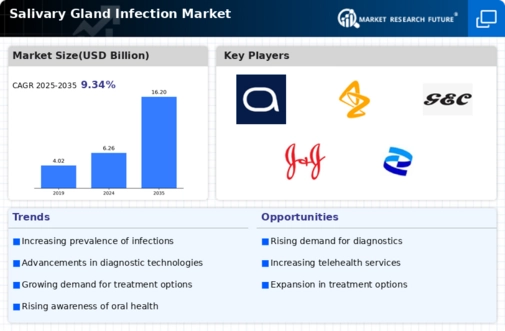

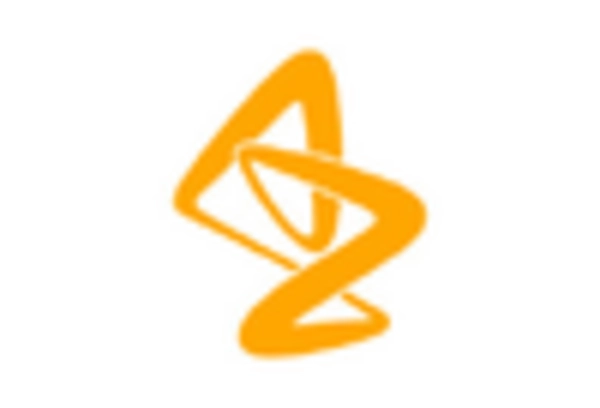
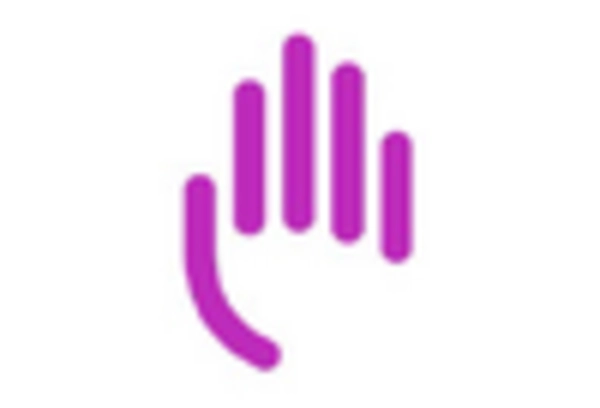
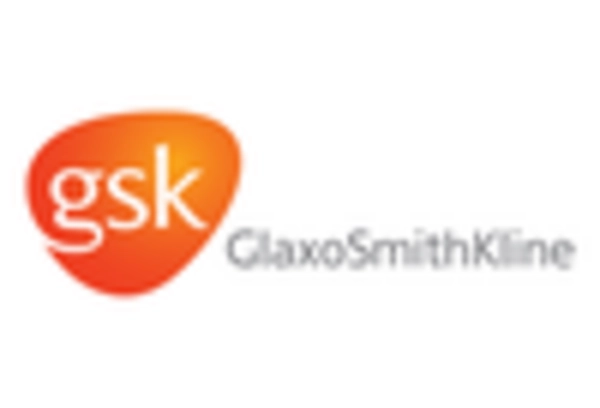

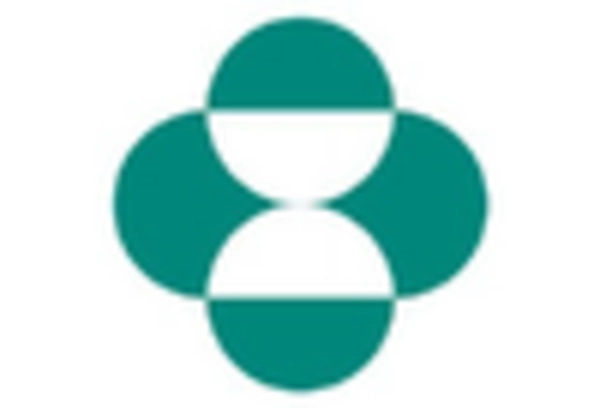

Leave a Comment